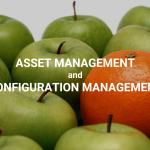The goal of every company is to satisfy its users. This certainly applies in the software industry. However, as the number of users increases, they tend to make more demands. Increased demands will increase how complex software is, as these demands may require adding new features. And of course, software firms try hard to control defects in their products whenever they add a new feature.
Nevertheless, the industry is still far from zero defects. To avoid defects in products shipped to users, firms in the software industry must pinpoint defects in their test environment before shipping products to users.
What’s a test environment, and how are developers making sure that they can find and cure defects in that environment? We’ll discuss both topics in this article.
What Is a Test Environment?
A test environment is like a simulator that provides real-life visual representation. It includes a server that allows developers to run tests on their software.
A test environment also allows developers to include hardware and network configuration. The purpose of this is to let the test engineer mimic the production environment so that they can find defects. Also, test engineers can write custom tests and execute them in the test environment. This lets test engineers ensure that the software is responding as it ought to.
Let’s look at how test engineers make sure their test environment mimics the production environment. When that happens, the team can remove issues and defects from software before shipping it to users.
What Is Test Environment Maturity?
Test environment maturity is a set of leveled guides that help test engineers determine how well-developed and rigorous their testing system is. Test engineers need to understand how the products they’re about to test actually function. The engineers should also be able to define the process they’ll use in test environments and manage those environments. And there are different levels of test environment maturity.
To understand test environment maturity better, let’s look at the Test Maturity Model (TMM). We’ll examine the different levels and find out how test engineers can measure environment maturity.
Test Maturity Model (TMM)
In order for test engineers to manage their test processes properly, the Illinois Institute of Technology developed the TMM framework. This framework works well with the Capability Maturity Model (CMM), which is the industry standard for software process development.
The TMM framework defines five maturity levels so that test engineers can manage their testing processes properly. These maturity levels help test engineers identify the next improvement state in their test environment.
Test engineers can’t measure their test environment maturity if they don’t know the level of maturity of their test environment. This is exactly what the TMM maturity level does. It displays levels of maturity and the steps required to attain each level.
Maturity Levels
Each maturity level consists of steps that are essential to attain test environment maturity. Let’s look at the different TMM maturity levels and consider how test engineers can measure their test environment maturity.
1. Initial Level
In the first level in the TMM framework, the goal of the test engineer is to ensure that the software is running successfully. The goal here is simply to make sure that the software developers have developed a working product. Although TMM doesn’t identify any process area for this level, the software should be working fine without breaking. So Level 1 has a low bar!
2. Definition Level
Definition is the second maturity level in the TMM framework. In addition to ensuring that the software is running successfully in the test environment, the test engineer needs to define test policies. This is because at this maturity level, basic testing methods ought to be in place. You’re trying to answer the question, “Does the software do what it’s supposed to?”
The different process area that this level identifies are:
- Test policies and goals: This is to make sure that test engineers specify goals and policies they need to achieve.
- Test methods, techniques, and environment that test engineers are using: It’s essential to spell these out.
3. Integration Level
This level involves the integration of testing methods, techniques, polices, and environment defined in the definition level. It’s necessary to do this so test engineers can determine software behavior. During the integration level, the engineers test life cycle and integration. Completing this step ensures testing is organized and carried out in a professional manner.
4. Management and Measurement Level
This TMM maturity level ensures that test engineers carry out quality test processes. At this stage, developers can evaluate and review software for defects. For example, after the integration level, the test engineers need to make sure they pick out all of the defects. The process areas this level identifies are test measurement, evaluation, and reviews.
5. Optimization Level
This is the final level. At this stage, the aim is to ensure that test processes and environment are optimized. This maturity level is important because testing isn’t effective unless defects are controlled. In this level, the team members figure out how to prevent defects. The process areas in this level are test improvement, optimization, and quality control.
Best Practices in Measuring Test Environment Maturity
We’ve explored the different maturity levels for TMM and discussed how this model is the industry standard for software testing. In this section, we’ll explore the best practices for measuring test environment maturity.
Hire a Test Engineer
A test engineer is in charge of carrying out tests on software to make sure it performs as expected. It’s important to employ a test engineer to manage software testing. Why? Because a qualified test engineer is highly skilled in using the right test environment, techniques, and tools.
Understand the Test Maturity Model
When you employ a test engineer for your firm, make sure that they understand the test maturity model. This is because they can’t measure what they don’t understand! Fully understanding the test maturity model will enable the test engineer to determine which processes are covered in each level and precisely what level their test environment has gotten to.
Don’t Skip Steps
It’s a bad practice to skip or merge different levels of the maturity models. This will not only make software testing confusing, but it may also produce adverse test results. Therefore, direct test engineers to write down the maturity levels and proposed date of completion before beginning to test.
Automate Testing
When test engineers automate testing, it becomes easier and faster to measure test environment maturity. For example, this test environment and management tool from Enov8 allows test engineers to automate tests and manage test environments without a hitch.
Measuring Test Environment Maturity Goes Better When You Understand Test Environment Management
Knowledge of TMM maturity levels isn’t enough to measure test environment maturity properly. To do so, test engineers need to be familiar with test environment management (TEM) and how it applies to TMM. So, let’s explore TEM.
Test environment management, according to Enov8, is the act of understanding IT environments across the life cycle and proactively controlling them to ensure they’re effectively used, serviced, and deleted promptly. With test environment management, test engineers can easily analyze software capability. This is because proper test environment management allows test engineers to measure test environment maturity properly. For this reason, there are tools like Test Environment Management Maturity index (TEMMi) to help firms understand test environment management.
Author
This post was written by Ukpai Ugochi. Ukpai is a full stack JavaScript developer (MEVN), and she contributes to FOSS in her free time. She loves to share knowledge about her transition from marine engineering to software development to encourage people who love software development and don’t know where to begin.


